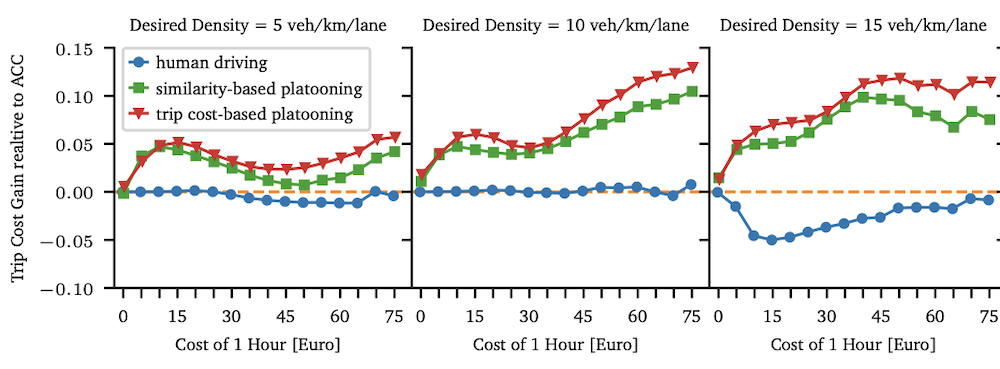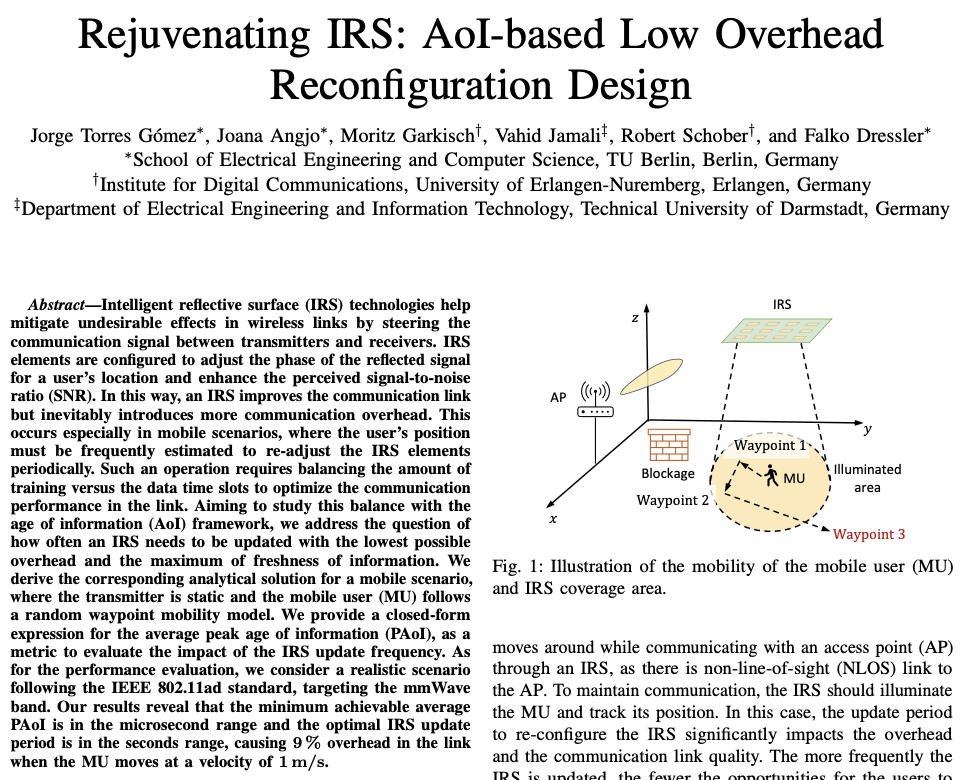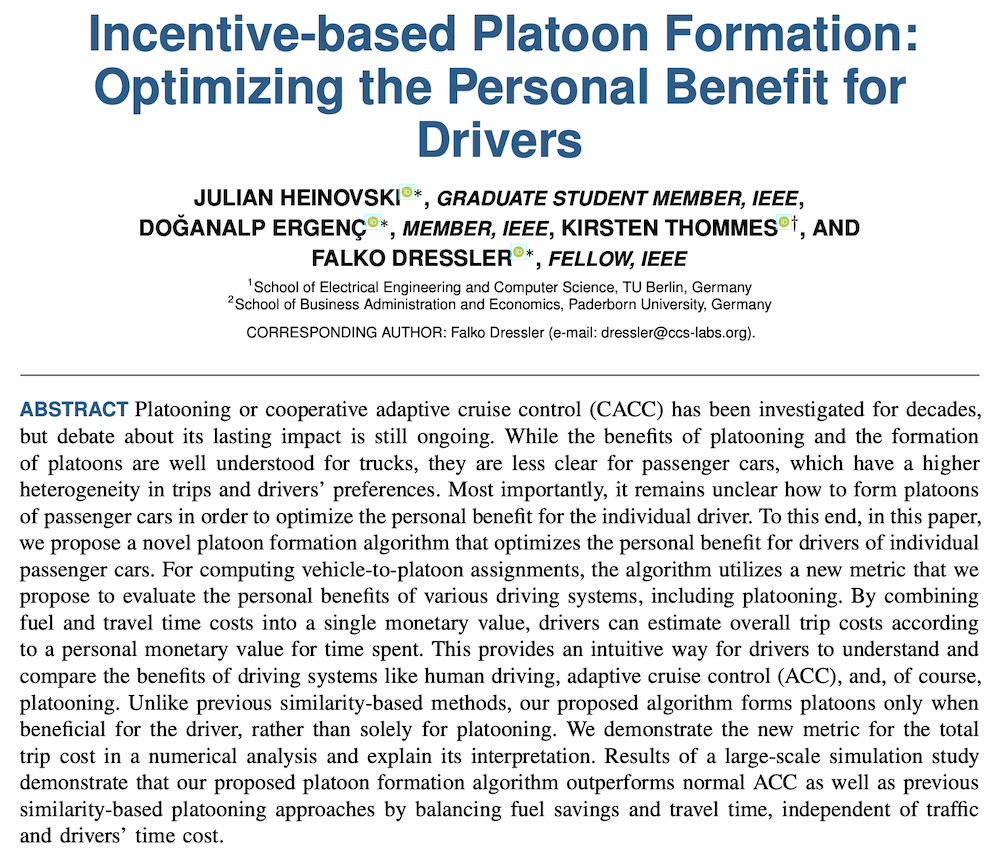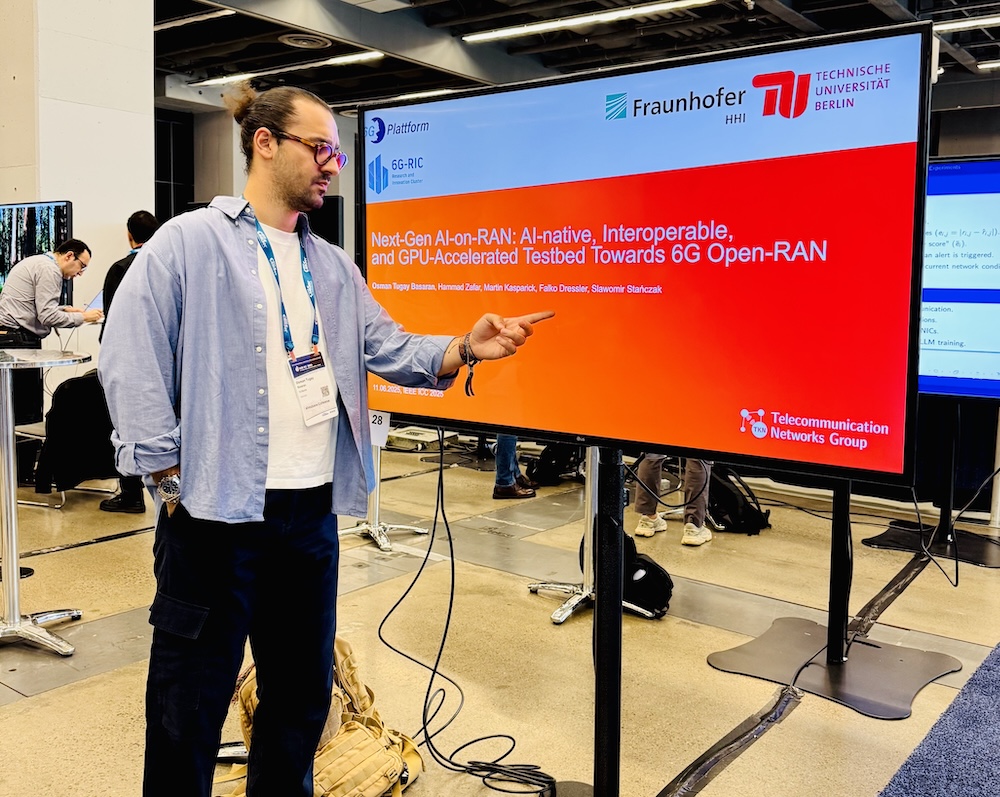DyMoNet - Dynamic Mobile Networks


Institutions
- TU Berlin
- TU Ilmenau
- University of Applied Sciences of Western Switzerland (HES-SO)
Team @ TKN
Former members
Funding
- DFG (Deutsche Forschungsgemeinschaft)
Project Time
- 12/2021 - 07/2026
Description
The evolution of current wireless access networks towards 5G and beyond is characterized, among others, by the provisioning of high-bandwidth services and by the capability of serving traffic from a large number of heterogeneous devices. Among the key approaches for provisioning high capacity in such networks, a prominent role is played by network densification. However, dense deployments of many small cell base stations imply huge investments, increasing both CAPEX and OPEX for the mobile network. Additionally, densification increases the amount of over-provisioned network resources, due to variability in traffic demand over space and time.
Following up recent research on connected cars, one of the most promising approaches to address these issues consists in exploiting vehicle-mounted small cell moving base stations. This allows taking advantage of the correlation between spatio- temporal patterns of users and of vehicles, in order to create a network that flexibly and naturally densifies whenever and wherever needed by many users, hence reducing the need for dense deployments of static base stations. The proposed concept constitutes a new paradigm for network design and operation, which seamlessly integrates static infrastructure with base stations operating on vehicles, with an unprecedented level of flexibility and adaptability. However, for such a moving network paradigm to effectively enable a dynamic and flexibly densified cellular network infrastructure, a number of key open research issues need to be addressed.
The main goal of the DyMoNet project is to enable such moving network paradigm, by addressing some of the key open research challenges which stand in the way of its practical feasibility. Specifically, the project will aim at: (1) identifying those scenarios and use cases in which the moving network paradigm holds the highest potential to increase networking performance and resource efficiency with respect to traditional static deployments; (2) developing mechanisms for reliable wireless mobile backhaul, for the interconnection of moving base stations to the core of the network; (3) elaborating QoS- aware mechanisms for dynamic interference management, enabling an efficient provisioning of connectivity under tight QoS constraints; and (4) investigating dynamically resource allocation and slicing in order to satisfy specific QoS constraints, while accounting for the dynamics of service demand as well as of the moving network infrastructure.
The outcomes of DyMoNet will advance the current state of the art in network planning and management, by providing new solutions for the design and the operation of future wireless access networks. Results will help assessing the potential of the moving network paradigm for enabling cost-effective and resource-efficient provisioning of communication services, offering technical inputs for economic evaluations, while removing some of the main technical obstacles to its implementation.
Media Coverage
Selected Publications
2025
Conferences and Workshops
 Laura Finarelli, Falko Dressler, Marco Ajmone Marsan and Gianluca A. Rizzo, "Assessing the Benefits of Ground Vehicles as Moving Urban Base Stations," Proceedings of 23rd Mediterranean Communication and Computer Networking Conference (MedComNet 2025), Cagliari, Italy, June 2025.
[BibTeX, PDF, More details]
Laura Finarelli, Falko Dressler, Marco Ajmone Marsan and Gianluca A. Rizzo, "Assessing the Benefits of Ground Vehicles as Moving Urban Base Stations," Proceedings of 23rd Mediterranean Communication and Computer Networking Conference (MedComNet 2025), Cagliari, Italy, June 2025.
[BibTeX, PDF, More details]
2024
Conferences and Workshops
 Laura Finarelli, Falko Dressler, Marco Ajmone Marsan and Gianluca A. Rizzo, "Mobile Networks on the Move: Optimizing Moving Base Stations Dynamics in Urban Scenarios," Proceedings of 15th IEEE Vehicular Networking Conference (VNC 2024), Kobe, Japan, May 2024, pp. 101–104.
[DOI, BibTeX, PDF, More details]
Laura Finarelli, Falko Dressler, Marco Ajmone Marsan and Gianluca A. Rizzo, "Mobile Networks on the Move: Optimizing Moving Base Stations Dynamics in Urban Scenarios," Proceedings of 15th IEEE Vehicular Networking Conference (VNC 2024), Kobe, Japan, May 2024, pp. 101–104.
[DOI, BibTeX, PDF, More details]
Technical Reports and Regional Workshops
- Laura Finarelli, Falko Dressler, Marco Ajmone Marsan and Gianluca A. Rizzo, "Mobile Networks on the Move: Optimizing Moving Base Stations Dynamics in Urban Scenarios," arXiv, cs.NI, 2404.18476, April 2024. [DOI, BibTeX, PDF, More details]
2023
Journals and Magazines
 Julian Heinovski, Jorge Torres Gómez and Falko Dressler, "Focusing on Information Context for ITS using a Spatial Age of Information Model," Elsevier Computer Communications, vol. 209, pp. 203–216, September 2023.
[DOI, BibTeX, PDF, More details]
Julian Heinovski, Jorge Torres Gómez and Falko Dressler, "Focusing on Information Context for ITS using a Spatial Age of Information Model," Elsevier Computer Communications, vol. 209, pp. 203–216, September 2023.
[DOI, BibTeX, PDF, More details]
Technical Reports and Regional Workshops
- Julian Heinovski, Jorge Torres Gómez and Falko Dressler, "Focusing on Information Context for ITS using a Spatial Age of Information Model," arXiv, cs.MA, 2304.12761, April 2023, pp. 1–17. [DOI, BibTeX, PDF, More details]
2022
Journals and Magazines
 Falko Dressler, Carla Fabiana Chiasserini, Frank H. P. Fitzek, Holger Karl, Renato Lo Cigno, Antonio Capone, Claudio Ettore Casetti, Francesco Malandrino, Vincenzo Mancuso, Florian Klingler and Gianluca Antonio Rizzo, "V-Edge: Virtual Edge Computing as an Enabler for Novel Microservices and Cooperative Computing," IEEE Network, vol. 36 (3), pp. 24–31, May 2022.
[DOI, BibTeX, PDF, More details]
Falko Dressler, Carla Fabiana Chiasserini, Frank H. P. Fitzek, Holger Karl, Renato Lo Cigno, Antonio Capone, Claudio Ettore Casetti, Francesco Malandrino, Vincenzo Mancuso, Florian Klingler and Gianluca Antonio Rizzo, "V-Edge: Virtual Edge Computing as an Enabler for Novel Microservices and Cooperative Computing," IEEE Network, vol. 36 (3), pp. 24–31, May 2022.
[DOI, BibTeX, PDF, More details]
Conferences and Workshops
 Julian Heinovski, Jorge Torres Gómez and Falko Dressler, "A Spatial Model for Using the Age of Information in Cooperative Driving Applications," Proceedings of 25th ACM International Conference on Modeling, Analysis and Simulation of Wireless and Mobile Systems (MSWiM 2022), Montréal, Canada, October 2022, pp. 85–94.
[DOI, BibTeX, PDF, More details]
Julian Heinovski, Jorge Torres Gómez and Falko Dressler, "A Spatial Model for Using the Age of Information in Cooperative Driving Applications," Proceedings of 25th ACM International Conference on Modeling, Analysis and Simulation of Wireless and Mobile Systems (MSWiM 2022), Montréal, Canada, October 2022, pp. 85–94.
[DOI, BibTeX, PDF, More details]
2021
Technical Reports and Regional Workshops
- Falko Dressler, Carla Fabiana Chiasserini, Frank H. P. Fitzek, Holger Karl, Renato Lo Cigno, Antonio Capone, Claudio Ettore Casetti, Francesco Malandrino, Vincenzo Mancuso, Florian Klingler and Gianluca A. Rizzo, "V-Edge: Virtual Edge Computing as an Enabler for Novel Microservices and Cooperative Computing," arXiv, cs.NI, 2106.10063, June 2021. [DOI, BibTeX, PDF, More details]
2019
Book Chapters
- Falko Dressler, Florian Klingler and Gianluca A. Rizzo, "Dynamic Mobile Base Stations in 5G Networks – The Moving Network Paradigm," in The 5G Italy Book 2019: a Multiperspective View of 5G, Marco Ajmone Marsan, Nicola Blefari Melazzi, Stefano Buzzi and Sergio Palazzo (Eds.), Consorzio Nazionale Interuniversitario per le Telecomunicazioni (CNIT), 2019, pp. 477–492. [BibTeX, PDF, More details]






